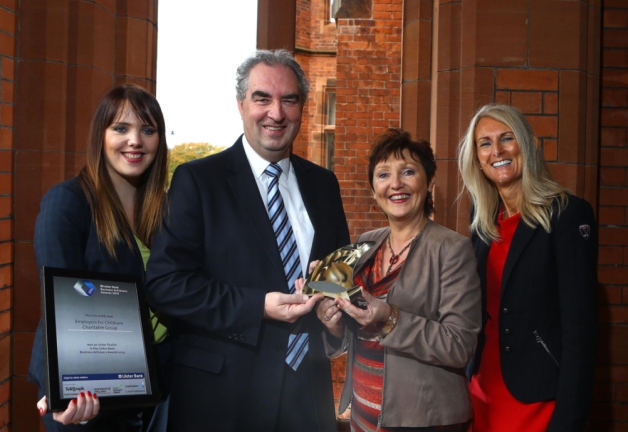Government Grants
Business Grants
Home Owner Programs
Federal Programs
About Us
Surface Transportation System Funding Alternative
Fixing America's Surface Transportation (FAST) Act of 2015, Pub.
L.
No.
114-94, H.R.
22, § 6020, H.R.
22, 114th Cong.
(2015) authorized the Secretary of Transportation to establish the Surface Transportation System Funding Alternatives (STSFA) program.
The purpose of the STSFA program is to provide grants to States to demonstrate user-based alternative revenue mechanisms that utilize a user fee structure to maintain the long-term solvency of the Federal Highway Trust Fund.
The FAST Act provides that $15 million in Fiscal Year (FY) 2016 and $20 million annually from FY 2017 through FY 2020 will be made available from the Highway Research and Development Program for grants for STSFA demonstration projects.
These grants shall make up no more than 50 percent of total proposed project costs, with the remainder coming from non-Federal sources.
Other Federal funds using their appropriate matching share may be leveraged for the deployment but cannot be considered as part of the STSFA matching funds, which must come from non-Federal sources unless otherwise supported by statute.
On August 1 of each year, if there are insufficient grant applications that meet program requirements, any excess funds must be transferred back to the Federal Highway Administration (FHWA) Highway Research and Development program.
The grants are only available to States; however, groups of States can form partnerships for regional or national proposals.
Section 6020 of the FAST Act authorizes the DOT to enter into agreements with State authorities to demonstrate user-based alternative revenue mechanisms.
However, this solicitation requires that a State department of transportation (State DOT) serve as the lead agency for administering the program funding through the Federal-aid highway program.
Another State agency or a State agency in a different State (if the project involves a group of States) may be responsible for providing day-to-day project oversight.
It is expected that all relevant State agencies (e.g., Department of Motor Vehicles, Department of Revenue) needed to initiate a full-scale deployment of the proposed revenue mechanism will be actively involved in the planning and operation of the demonstration.
L.
No.
114-94, H.R.
22, § 6020, H.R.
22, 114th Cong.
(2015) authorized the Secretary of Transportation to establish the Surface Transportation System Funding Alternatives (STSFA) program.
The purpose of the STSFA program is to provide grants to States to demonstrate user-based alternative revenue mechanisms that utilize a user fee structure to maintain the long-term solvency of the Federal Highway Trust Fund.
The FAST Act provides that $15 million in Fiscal Year (FY) 2016 and $20 million annually from FY 2017 through FY 2020 will be made available from the Highway Research and Development Program for grants for STSFA demonstration projects.
These grants shall make up no more than 50 percent of total proposed project costs, with the remainder coming from non-Federal sources.
Other Federal funds using their appropriate matching share may be leveraged for the deployment but cannot be considered as part of the STSFA matching funds, which must come from non-Federal sources unless otherwise supported by statute.
On August 1 of each year, if there are insufficient grant applications that meet program requirements, any excess funds must be transferred back to the Federal Highway Administration (FHWA) Highway Research and Development program.
The grants are only available to States; however, groups of States can form partnerships for regional or national proposals.
Section 6020 of the FAST Act authorizes the DOT to enter into agreements with State authorities to demonstrate user-based alternative revenue mechanisms.
However, this solicitation requires that a State department of transportation (State DOT) serve as the lead agency for administering the program funding through the Federal-aid highway program.
Another State agency or a State agency in a different State (if the project involves a group of States) may be responsible for providing day-to-day project oversight.
It is expected that all relevant State agencies (e.g., Department of Motor Vehicles, Department of Revenue) needed to initiate a full-scale deployment of the proposed revenue mechanism will be actively involved in the planning and operation of the demonstration.
Obtain Full Opportunity Text:
http://grants.nih.gov/grants/guide/pa-files/PAR-17-256.html
Additional Information of Eligibility:
Other Eligible Applicants include the following: Alaska Native and Native Hawaiian Serving Institutions; Asian American Native American Pacific Islander Serving Institutions (AANAPISISs); Eligible Agencies of the Federal Government; Faith-based or Community-based Organizations; Hispanic-serving Institutions; Historically Black Colleges and Universities (HBCUs); Indian/Native American Tribal Governments (Other than Federally Recognized); Non-domestic (non-U.S.) Entities (Foreign Organizations); Regional Organizations; Tribally Controlled Colleges and Universities (TCCUs) ; U. S. Territory or Possession.
Full Opportunity Web Address:
Contact:
Agency Email Description:
Agency Email:
Angela.jacobs@dot.gov
Date Posted:
2017-04-13
Application Due Date:
2017-06-12
Archive Date:
2017-10-01
Social Entrepreneurship
Spotlight
Childcare Charitable Group Named Top Social Enterprise

Employers For Childcare Charitable Group (EFCG), a Lisburn-based charity, has been crowned top Social Enterprise at the Ulster Final of 2014’s Ulster Bank Business Achievers Awards. EFCG seeks to “make it easier for parents with dependent children to get into work and to stay in work.”

